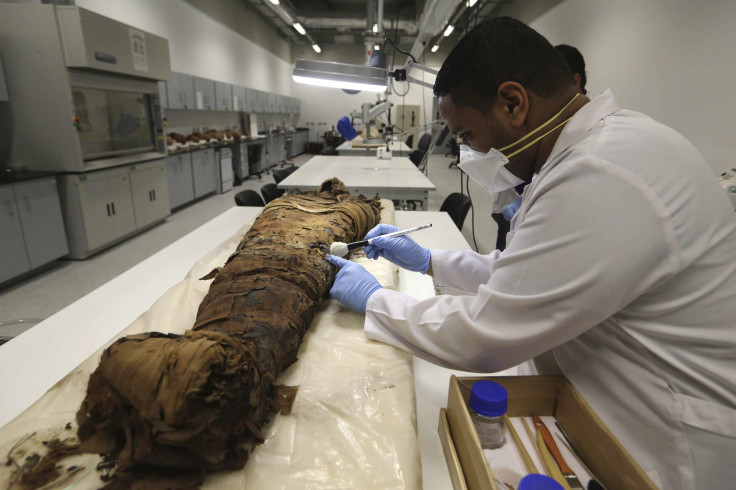2,000-Year-Old Egyptian Mummy Paintings Reveal Clues To Modern Portraits, Scientists Say

While most mummy paintings at the Northwestern University research center are more than 2,000 years old, they are still imparting new information and can offer clues to some of the first portrait artists in Western history, researchers revealed in a press conference Sunday. Scientists have begun using CSI technology to learn more about painting techniques and traditions from the Roman-Egyptian era, which is considered one of the first antecedents to modern portraiture.
"Our goal is to use objects themselves as evidence for their production," Marc Walton, leader of the interdisciplinary team, said in a press conference in Washington, D.C. "In our interrogation, we have used a number of cutting-edge analytical tools developed here at Northwestern to uncover new and intriguing clues about how to identify the hand of an individual artist," he said.
Mummies were often buried with life-like portraits, frequently created on wooden panels, starting around the third century A.D. when the Greco-Roman style began to flourish. The researchers employed an algorithm to measure brush and tool marks, focusing on portraits that accompanied mummified human remains from the ancient city of Tebtunis, or modern day Tell Umm el-Baragat, Egypt.
The city of ancient Tebtunis spanned 3,000 years, and it is perhaps best known among Egyptologists and historians for its thriving Greco-Roman period from the third century B.C. to the third century A.D. Tebtunis is also known for its extensive papyri collection that spans from archival information on the temple to notary forms to accounts of daily life.
Cities and towns from the Roman-Egyptian period were a veritable mix of cultures and traditions, according to an exhibit at the Metropolitan Museum of Art in 2000. “People may have felt as Greeks in the gymnasium, as Romans in administrative roles and as Egyptians in their village communities, and when venerating the gods or contemplating the afterlife,” read a press release from the exhibit.
© Copyright IBTimes 2025. All rights reserved.






















